St. Kitts: Lessons in History, Emancipation, Culture Shock, and Women’s Lib
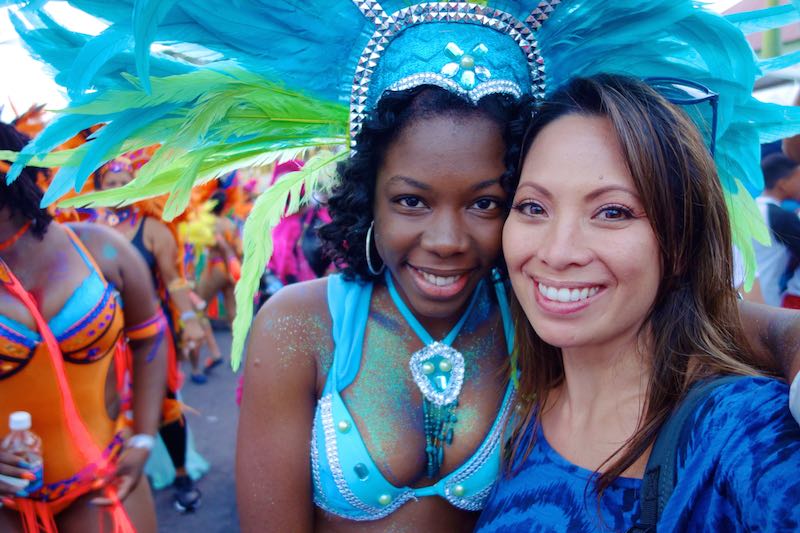
As we finished our mini-bus tour of the island of St. Kitts, our local guide informed us that it was the final day of the Carnival celebration– it started at Christmas, and that there would be a huge parade through the center of town, Basseterre. While confused about the timing (this was January 2nd after all; Carnival is usually associated with pre-Lent festivities and usually takes place in late February or early March), we were excited to be a part of the local merriment and beelined it to the historic center.
It was like nothing I’d ever witnessed. Perhaps like me, when you think of Carnival, you think of colorful parades in Rio de Janeiro, Mardi Gras bead-throwing in New Orleans, or elegantly dressed masqueraders in Venice. This was a little bit of all of that, sans the elegance, but also disturbingly more.
The Carnival parade, or Sugar Mas (Sugar, ostensibly because of the importance of sugar cane as a resource, and Mas, which is short for masquerade) seemed endless. It began about 3pm and continued non-stop until midnight. Clowns hid their faces behind elaborately painted masks and stilt-walkers called Moko-Jumbies lumbered through the downtown streets.
Floats carrying string, steel, and brass bands and their mammoth speakers blasted incessant cacophonies of thumping, screeching, bumping, booty-shaking beats. And booties in the parade and on the sidelines were certainly doing their fair share of shaking.
Many participants in the parade –male and female–dressed in ornate costumes, accentuated with feathers, tropical-colored and rhinestoned garments, and hastily plastered body glitter. A significant number were scantily clad, leaving little to the imagination. Most donned sensible shoes (wise move considering how much walking they’d do in the parade).
I’m no prude, but excess can be oppressive, and sensory claustrophobia set in on me as this celebratory scene enveloped every available space around me.
My senses were bombarded from every direction and in every manner. It was nearly too much: the raucous cheering, the deafening music, the dizzying array of colors, the mélange of food stall smells, the free-flowing alcohol (full disclosure: I did not imbibe), the bare skin, and the twerking–gawd, the twerking!
I’m no prude, but excess can be oppressive, and sensory claustrophobia set in on me as this celebratory scene enveloped every available space around me.
St. Kitts: Lessons in History, Emancipation, Culture Shock, and Women’s Lib
As a visitor from somewhere that doesn’t have street parties like this, I tried to make sense of it all. It wasn’t Lent yet, so why Carnival? If it’s related to religion, why the brazen lack of clothing? What does this celebrate? What do the costumes signify? Why are the masks scary? How can you party like this for 10 nights in a row? What is this all about really?
The hardest thing to grapple with was how the women were portraying themselves. I assumed, because of all the kids participating and spectating, that this was meant to be a family-friendly event. Yet seeing women of all shapes, sizes, and ages in revealing attire, grinding against men and other women, and simulating intercourse on the pavement in the name of “dancing” made me question that.
As we finished our mini-bus tour of the island of St. Kitts, our local guide informed us that it was the final day of the Carnival celebration– it started at Christmas, and that there would be a huge parade through the center of town, Basseterre.
These women (who conceivably may have been everything ranging from waitresses, mothers, veterinarians, entrepreneurs, and hotel staff to grandmothers, hairstylists, secretaries, scuba instructors, nursery school teachers, and computer engineers) were choosing to be ogled at, fondled, and catcalled…publically, in all their sparkly and befeathered glory.
Not only that, they were often the initiators of the bump-and-grind action, hauling men up on the backs of floats so that they could be better seen by their adoring crowd.
What was I not understanding about this?
St. Kitts: Lessons in History, Emancipation, Culture Shock, and Women’s Lib
Don’t get me wrong. I was grateful to be a witness to this. Like the other parade-goers, I was caught up in the spirited nature of the parade, mesmerized by the pageantry of colors, delighted by the richness of the costumes, and moved by the festiveness that moved through both participants and onlookers. But my mind could not wrap itself around–what seemed to be–the self-degradation of these vivacious, strong, complex women. The images of them haunted me throughout the rest of the day and early evening as we explored the rest of the town.
The partying was not confined to the parade route. Throughout the web of streets were food vendors selling gut-bombs of every variety, drink vendors who seemed to purvey only “the hard stuff”, carts hocking balloons and plastic toys, and parents buying them for their wide-eyed children. Everyone was in a good mood. It was a party, after all.
We found a quieter area of town and came upon Independence Square (former site of the slave market). While no monument to the emancipation of the island’s slaves adorns the park, residents need no reminder that the oppression suffered by their ancestors shaped the history of this island.
It’s inescapably woven into their heritage and informs their present. But the same is true of independence in practice. How does one choose to live: enslaved to the ghosts of the past, or embracing freedom in the here and now?
St. Kitts: Lessons in History, Emancipation, Culture Shock, and Women’s Lib
As we headed back to our ship, we saw many locals stealing a quiet moment from the excitement of the festival, enjoying quality time with friends, family, and lovers. Rick–being the bolder of the two of us–really wanted to know more about the celebration and asked several people about it along the way. Most everyone basically said, “It’s a party. It’s Carnival. We always do this after Christmas.” No other explanation given, even when prodded.
Finally we encountered a man who proudly told us, “This is part of our story of emancipation.” I was confused because Emancipation was given on August 1, 1834. I asked him about that. He said, “Yes, that’s true, but this time of year was historically when slaves were not working in the fields. It was their ‘time off,’ the time when they could celebrate their long-held cultural traditions in relative freedom from their oppressors. ”
Couldn’t it be that these women define for themselves how they want to look, what they believe is beautiful and valued, and what they can do with their own bodies?
And then a light bulb went on for me. If what he said was true–and I want to believe that it is–then perhaps the audacious behavior of the men and women in the parade was about more than being lewd in public. Maybe it’s a form of cultural freedom. Perhaps they make their own societal rules about what is appropriate and what is empowering. Couldn’t it be that these women define for themselves how they want to look, what they believe is beautiful and valued, and what they can do with their own bodies? And that certainly is something to celebrate.
And maybe I, as a traveler, can learn to better withhold judgment. Perhaps I can learn to not impose my societal values on another’s culture. I don’t know the answers, and I’m not sure I’m even asking the right questions when I consider all this, but I think that accepting the fact that I don’t know opens the door to learning more about the cultures I encounter in my travels.
St. Kitts: Lessons in History, Emancipation, Culture Shock, and Women’s Lib was originally published here. Photos by Trish Feaster.

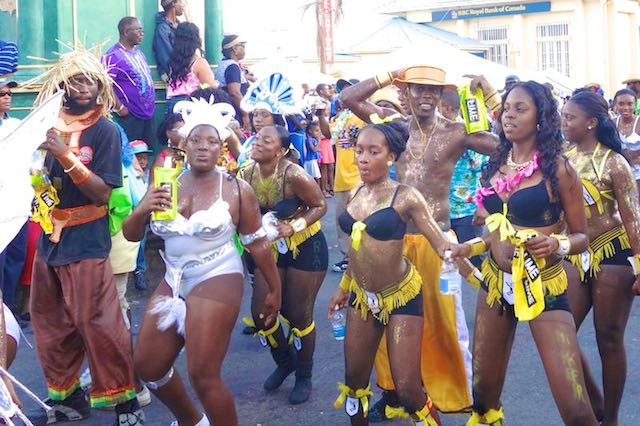
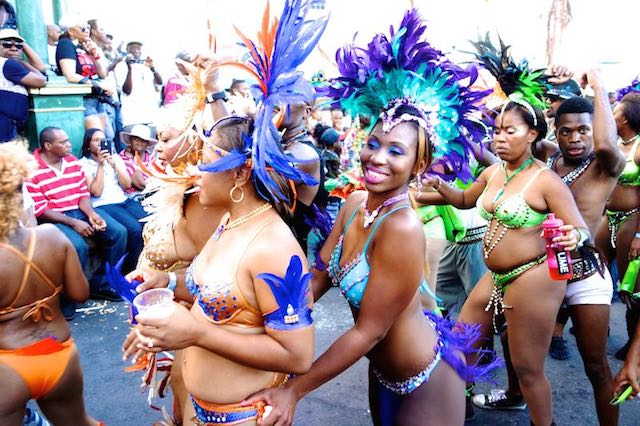
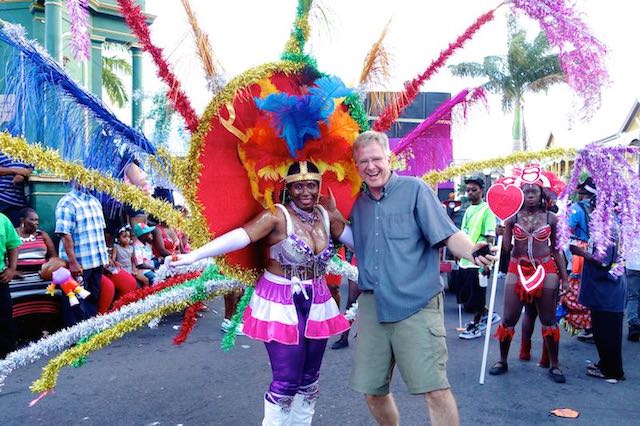
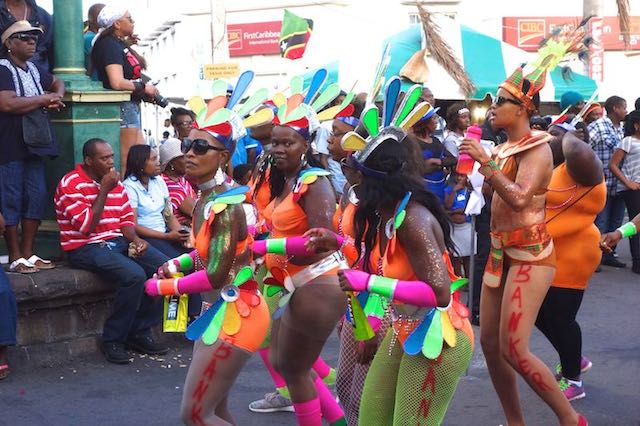








One thought on “St. Kitts: Lessons in History, Emancipation, Culture Shock, and Women’s Lib”